Abstract:
Lab Manager magazine1 recently published a feature entitled Survey Says. In this article was a section called “What You Need to Know Before Buying a Fume Hood.” Ten factors were named in over half the lab managers surveyed. We will review and analyze these factors and discuss how Flow Sciences addresses them. Whatever we’re doing, most of our customers seem to like it a lot!

Introduction:
In the December 2018 Lab Manager, the article Survey Says, cites the top ten things managers look for in a chemical fume hood:
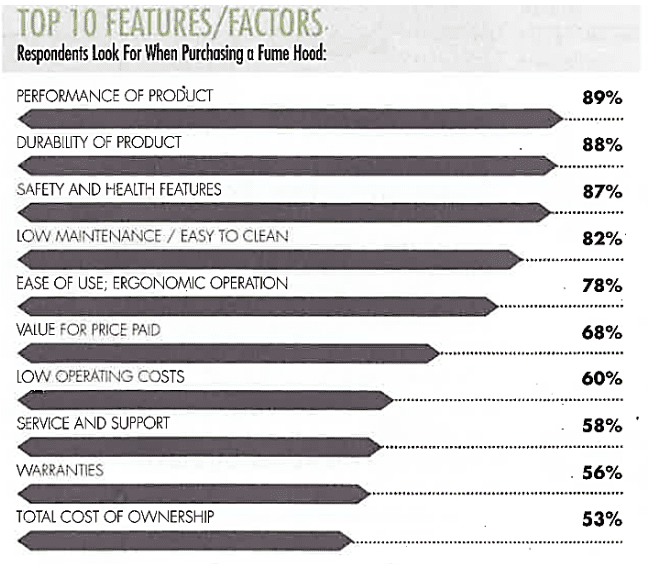
We decided to look at this “top ten list” and see how the Flow Sciences fume hood stacks up. We discovered that these sought-after qualities really lead to a shopping list of features, most of which are standard on the Saf T Flow hood…..read on!
Top Ten features reviewed:
1 – Performance of Product:
Before performance can be discussed, Flow Sciences always asks our customer what application is being undertaken in the fume hood.
This is very important. Most containment manufacturers have valuable and worthwhile tests they perform on standard product. These tests may be generally useful, but not relevant if the customer, for example, requires a hood with a larger than standard sash opening. Or if the chemicals being used in the hood have unique characteristics that require special linersor wash-down systems.
Many lab managers may not realize that these factors, if not considered, will lead to poor performance or dangerous conditions. Once special needs are considered, Flow Sciences can provide testing information on standard product, or run tests on the modified hood and document the effectiveness of the modifications.
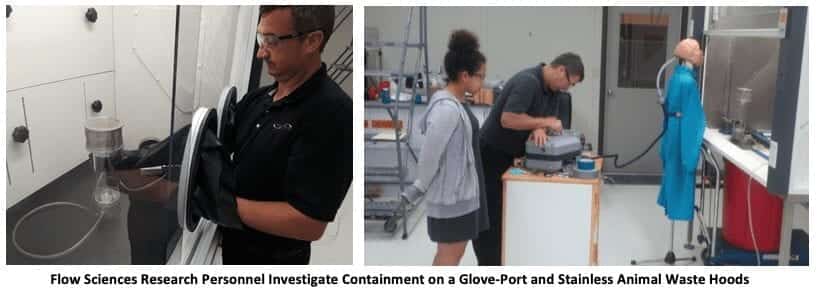
Both of the non-standard products shown above had outstanding containment both on ASHRAE 110-2016 and the “HAM” test developed by Tom Smith of 3-Flow and Lawrence Berkeley National Lab 2.
2 – Durability of product.
Flow Sciences believes fume hoods should have a minimum serviceability of twenty years. If lightly used, most fume hoods made in the US will last this long. If hoods must be moved or modified within this time period, or if they are heavily used, or used for applications different than those specified, they may not last one year, or never work at all!
We illustrate below several design “weak points” of many common fume hoods sold today and better ways to design a more robust product.
A – Fume hood sash system. Such a system should work reliably, need few service adjustments, and never break down. Shown below are examples of an inferior and a good sash counterbalance system:
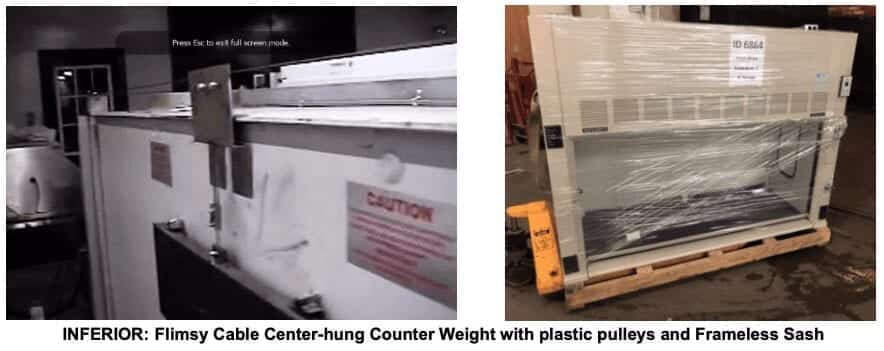
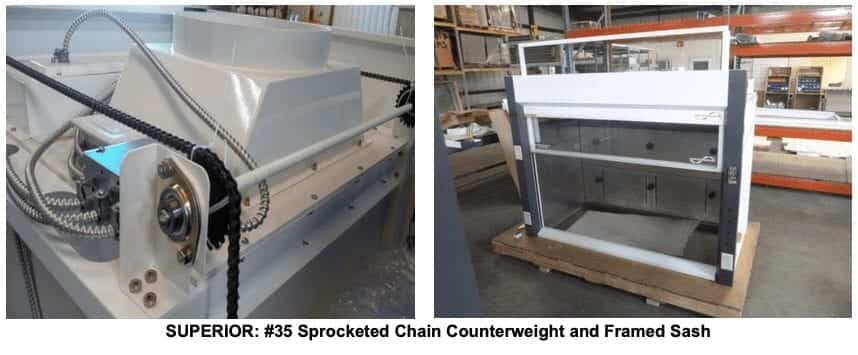
B – The fume hood support frame should be a stand-alone heavy-gauge system! If equipment collapses or a fire breaks out, such a system prevents hood collapse if key liner panels get broken!

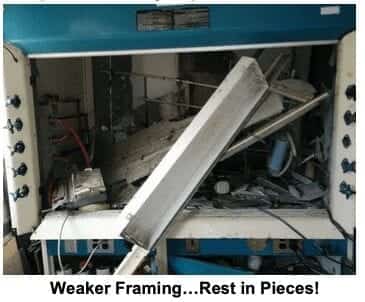
C – Flexible Plumbing is important today. It used to be plumbing in fume hoods was hard- piped. Such plumbing had solders which could rattle loose in shipping and leak when hooked up to pressurized services in the lab. Newer plumbing is flexible with no welds at all! This system hooks up quickly to mated pressurized fittings in the field. Also this flexible system allows service gasses to be changed or modified if research requirements change!
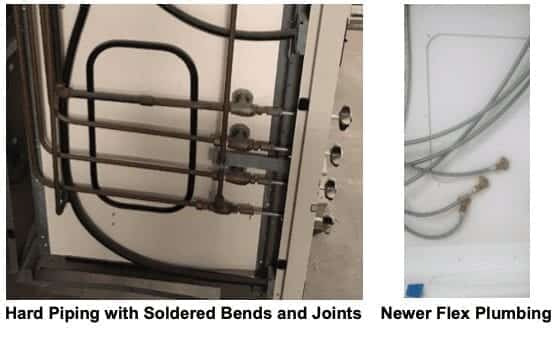
D – Flexible Counter Top Design! This top actually slides out for replacement or repair. The lift-up airfoil allows cords to be routed to outlets without resting on the airfoil top where the sash will run into cords every time it is closed!

3 – Safety and health features. The primary purpose of a chemical fume hood system is user safety. Features of design and construction should work as a system to assure this. We recommend any fume hood demonstrate safety by compliance with at least five published standards:
A – ASHRAE 110 2016. The use of a gas diffuser inside the fume hood and a mannequin with a breathing zone detector to assure that less than 0.05 ppm (Parts per million) of tracer gas gets into the breathing zone of the mannequin during a five-minute test.
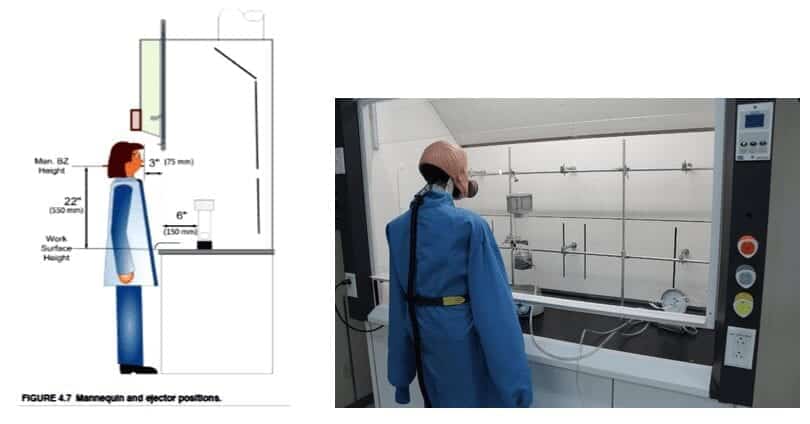
B – The Human as Mannequin Test. Cited earlier, the test uses a gas diffuser and simple lab equipment inside the fume hood which is manipulated by a test subject with a breathing zone sensor. A pass/fail reading of less than 0.05 PPM (parts per million) should again be used.
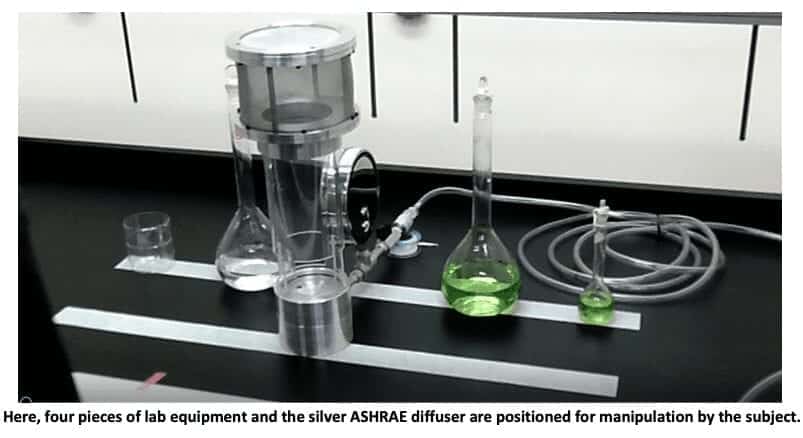
C – The UL 1805 Standards. Widely accepted in the US and Canada, UL 1805 sets forth both a physical testing regimen for safety glass, epoxy work tops, and liner materials and an outline for internal wiring of the fume hood. Most major fume hood manufacturers comply with these standards, products in conformity must have a UL 1805 compliance tag visible somewhere on the fume hood exterior.
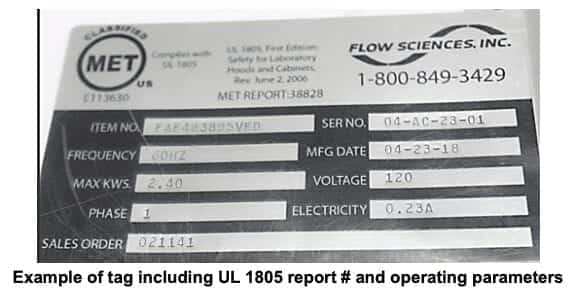
D – Surrogate Powder Containment and Balance Stability data for fume hoods involved in pharmaceutical weighing and dispensing procedures. More and more fume hoods are involved in procedures where pharmaceutically active compounds are manipulated. These materials do not diffuse in the same way vapors and gasses do. If such materials are used in a fume hood, containment data regarding powders must be provided using an appropriate test room and collection equipment. Procedures should reflect the types of manipulation to be used by the customer.
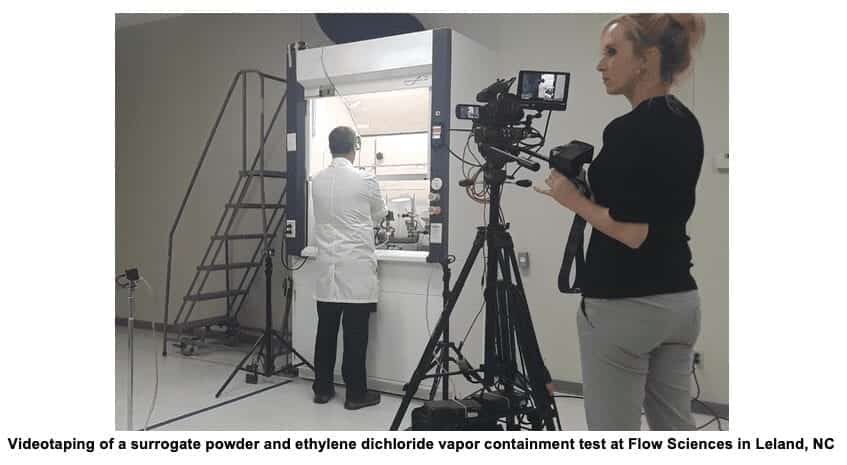
E – ISO 9001:2015 Certification of the manufacturing facility. All materials and procedures must be trackable and verifiable to assure construction material, flame spreads, certifications, and other assembly issues relevant to the safety and durability of the equipment are solidly documented.
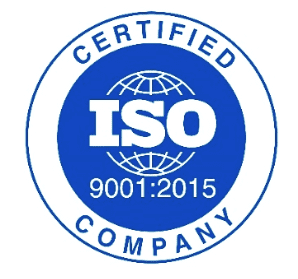
4 – Easy to Clean. Any chemical fume hood should be easy to clean. For scrupulous cleaning, fume hood components must be chemically resistant and easy to access for cleaning.
A – Chemical resistivity. All paints must be certified against the SEFA (Scientific Apparatus Manufacturers’ Association) standard set forth in SEFA 8-M-2010. In this standard, paints are tested against scratching, abrasion, and chemical resistivity. Liners must meet NFPA Class A flame spread requirements.
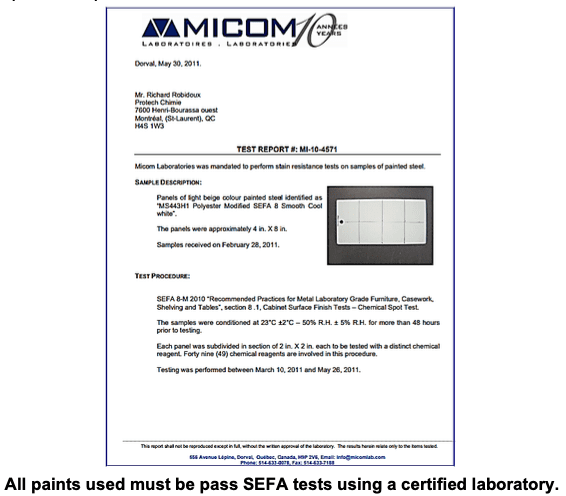
B – Access to all exposed surfaces. All exposed surfaces inside the fume hood containment area must be completely accessible for cleaning. Illustrations below show how this is achieved in the Flow Sciences product:

5 – Ergonomic ease of operation. Several features help satisfy this criterion. The glass top panel allows complete vision of the hood interior. Great for tall distillation columns or thermometers on tall equipment. The chain drive sash is easier to move up and down than any other system and does not wear out. Either bright T-5 fluorescent lighting or high output LEDs are available for clear vision of the very deep 25 7/8” hood interior. Base cabinets or a table for seated work are available. We also have built in a very stable anchoring system for scaffolding. All our standard hoods come with this anchoring system. To maximize flexibility needs inside a lab, Fume hoods are available in 1’ width increments from 3’ to 8’.
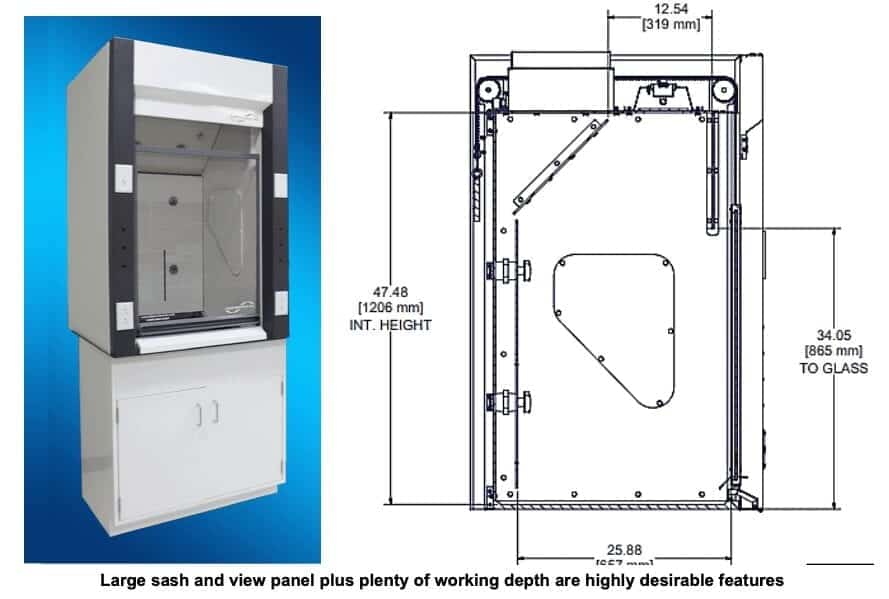
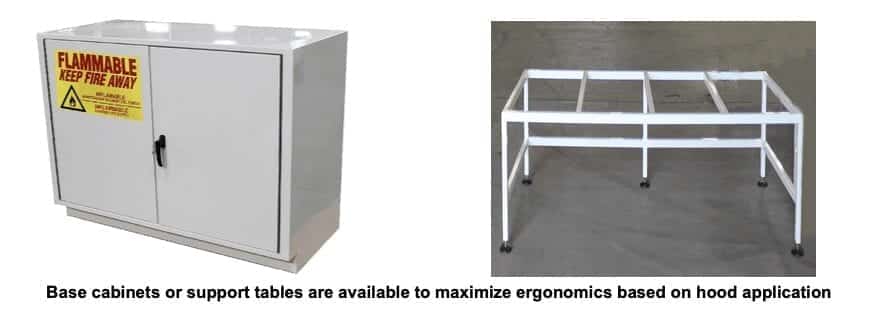
6 – 7 – 10 – Value for Price Paid, Low operating costs, Cost of ownership
These three lab manager survey questions are so interwoven, that the author will lump them together for analysis. The sixth and seventh issues, value and operating cost, cannot accurately be discussed as separate items. When one purchases a fume hood, the hood purchase price is just the tip of the iceberg4 as far as operating cost.
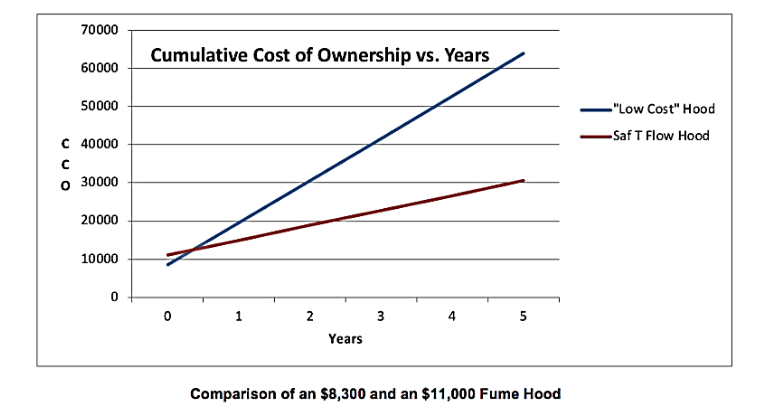
As seen in the graph above from an article written last year, a “low cost” hood inherently consumes more energy than a hood designed to save energy by exhausting less air. Over just five years, the engineered hood (red line, higher first cost) has consumed $30,000 of energy, while the low cost hood has consumed $64,000! (This is not a good way to save $2,700 on purchase price!)
In fact, even asking someone to evaluate hood price/value and energy savings separately is a fatal error! The author invites anyone interested to read the cited article and the various mathematical inputs that fostered the graph shown above.
So value, properly evaluated, must include energy efficiency!
Let’s now look at the tenth survey question, cost of ownership. This tenth item on Lab Managers survey list is clearly also part of the discussion we are now having regarding value and energy efficiency. The author regards valueand energy efficiency as inputs into discerning cost of ownership!
Here’s the headline: Cost of ownership will always favora contemporary, engineered energy-efficient fume hood! As an example, the Flow Sciences energy-efficient hood has remarkable containment down to 60 FPM at an 18” sash opening. Check out these containment graphs:
6’ Fume hood containment at 60, 80, and 100 FPM:
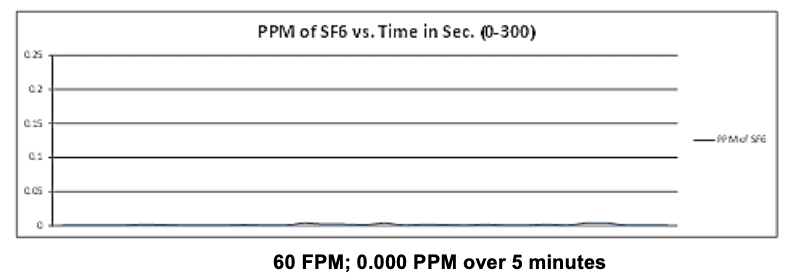
The bottom line? This fume hood persistently shows comparable very low control levels on the ASHRAE 110-2016 test regardless of face velocity within the 60 FPM to 100 FPM range!
FINALLY, a hood that can operate at very low face velocity without diminished containment capability! Engineering and design make a difference. Engineering and design save exhaust. Engineering and design yield the lowest cost of ownership!
8 – Service and Support. This issue is really important and is underrated on the list by the rankings provided. A lab safety item like a fume hood cannot even begin its life without being “checked out” after installation to be sure it is functioning properly. One must use knowledgeable resource people who can compare how a fume hood is supposed to work with how it is actually Knowledgeable service at Flow Sciences begins with “ask Robin”. Through this contact person, a high level of service and customer support are achieved by referencing telephone questions to the appropriate engineer. This service has received the highest customer reviews. Our 800 service number is part of the fume hood label!
This may be why our best customers keep coming back with additional orders, while praising our customer service! 6

9 – Warranty. All mechanical and electrical components of the Saf T Flow fume hood are guaranteed against defects for a period of one year from the date of receipt. A warranty form and card are included with manuals for each unit sold.
In addition to this rather limited issue, Flow Sciences has always “gone the extra mile” with our customers on answering questions, providing information on replacement parts, or sending out safety videos or other materials that may have been lost after the product was delivered and installed.
Summary:
The Flow Sciences Saf T Flow fume hood is a laboratory safety product. We have shown here how it addresses laboratory managers’ ten top criteria for a successful safety product. These fume hoods perform the tasks lab managers identify as important. They are durable, safe, easy to maintain, and ergonomically designed. They are of very high value and exhibit a very low cost of ownership compared to similar products. These fume hoods are impressively warranted to do their intended job. And Flow Sciences has an exemplary record of post-sale customer support.
As long as our customers keep smiling, we will keep providing the finest containment equipment in the industry!
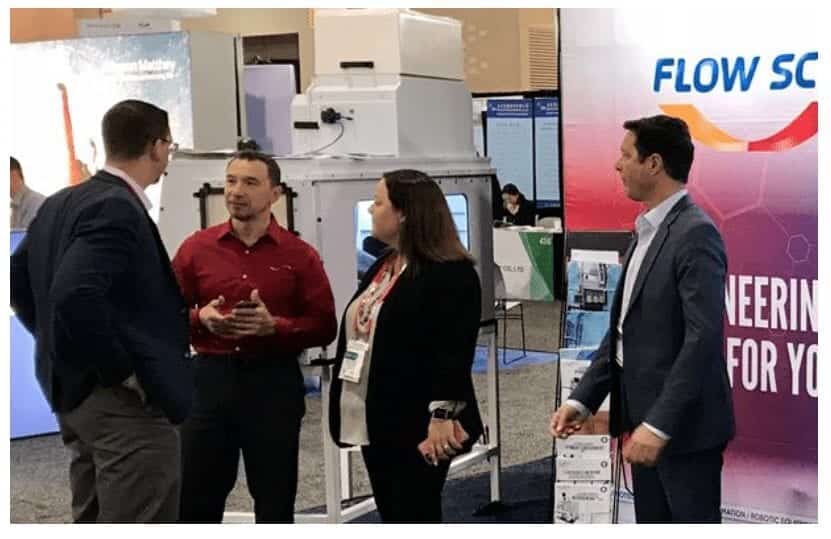
Footnotes:
- Lab Manager Magazine, 12/2018, p57
- Side-by-Side Fume Hood Testing, Human-as-Mannequin Report, 2004, California Energy Commission, Sartor, Sullivan, Bell, Smith, et.al., p9
- On June 17, an explosion in a chemistry lab at the University of Minnesota injured graduate student Walter Partlo. He was making trimethylsilyl azide, starting with 200 g of sodium azide. The incident originated in lack of hazard awareness, school representatives say, and the department response focuses on identifying hazardous processes and communication. http://cenblog.org/the-safety-zone/2014/07/more-details-on-the-university-of-minnesota-explosion-and-response.
- The Fume Hood Product Life Cycle, A Cost of Ownership Analysis, Haugen, 2018, https://flowsciences.com/fume-hood-product-life-cycle/
- Typical email praise: ” I just wanted to reach out to let you know that I have dealt with many technical support and parts associates in our industry over the years and none have been more helpful or pleasant than Robin Williams. I have never been disappointed in the high quality service that Flow Sciences provides. I look forward to meeting both you and Robin at the upcoming CETA conference in Memphis.
Have a great day!”

